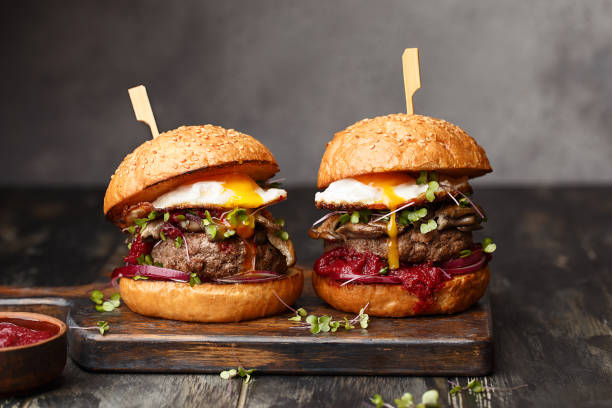The Story of Beef: A Culinary Delight
Beef has been a staple of many cuisines for centuries, prized for its rich flavor, versatility, and nutritional benefits. Whether it’s a juicy steak, tender roast, or flavorful stew, beef offers a diverse array of cuts and preparations that can satisfy any palate. In this article, we explore the history, health benefits, and culinary possibilities of beef, highlighting why it remains a beloved choice in kitchens around the world.
A Brief History of Beef
Beef has been a fundamental part of the human diet for millennia. Cattle were first domesticated around 10,000 years ago in the Near East, where they were initially used for labor and milk. Over time, people began to appreciate beef as a source of high-quality protein and energy. By the Middle Ages, beef had become a common food in many parts of Europe and Asia, and its consumption grew as methods of farming and butchering evolved.
As civilizations advanced, so did beef preparation techniques. In the 18th and 19th centuries, the industrial revolution played a significant role in making beef more accessible to the masses, as innovations in refrigeration and transportation allowed for easier distribution. Today, beef is enjoyed worldwide, with every culture adding its own touch to how it’s prepared and served.
The Nutritional Value of Beef
Beef is not only delicious, but it’s also highly nutritious. It is an excellent source of high-quality protein, which is essential for muscle growth and repair, as well as for maintaining a healthy immune system. A single 3-ounce serving of lean beef provides about 22 grams of protein, along with key vitamins and minerals like iron, zinc, and B vitamins (especially B12), which are crucial for energy production and red blood cell formation.
Beef is also rich in omega-3 fatty acids, particularly in grass-fed varieties. These healthy fats support brain function and heart health. However, it’s important to note that beef can be high in saturated fat, particularly in fattier cuts, so choosing lean cuts and balancing beef consumption with other protein sources is recommended for maintaining a healthy diet.
Different Cuts of Beef
One of the reasons beef is so popular is the variety of cuts it offers. Each cut of beef has its own unique flavor and texture, making it suitable for different cooking methods. Here are some of the most common cuts:
- Steaks: Cuts like ribeye, sirloin, and filet mignon are perfect for grilling or pan-searing. Ribeye is known for its marbling and rich flavor, while filet mignon is prized for its tenderness.
- Roasts: Cuts like the chuck roast, brisket, and prime rib are perfect for slow-roasting, braising, or smoking. These cuts often become more tender and flavorful the longer they cook.
- Ground Beef: Ground beef is incredibly versatile and can be used in burgers, meatballs, tacos, or pasta sauces. It’s available in varying lean-to-fat ratios, so you can choose the right one for your dish.
- Beef Short Ribs and Shanks: These cuts are great for slow cooking, braising, or making stews. The long cooking times allow the tough meat to become tender and flavorful.
- Stew Meat: Often derived from tougher cuts, stew meat is perfect for hearty soups, stews, and braises. The slow cooking process tenderizes the meat while infusing the dish with rich flavors.
Cooking with Beef
Beef is incredibly versatile and can be prepared in numerous ways to suit your taste preferences. Here are some of the most popular cooking methods:
- Grilling: Ideal for steaks, burgers, and kebabs, grilling adds a delicious smoky flavor to beef. Just make sure to season your beef with salt, pepper, and your favorite spices before grilling.
- Roasting: Roasts like prime rib or chuck roast are perfect for the oven. Roasting at a low temperature for several hours creates a tender, flavorful meal.
- Braising and Stewing: Tougher cuts of beef, such as brisket or short ribs, benefit from slow cooking. These methods allow the meat to break down and absorb all the flavors of the braising liquid.
- Stir-Frying: Thinly sliced beef, such as flank steak or sirloin, is great for stir-frying. Quickly cooked at high heat with vegetables and sauces, this method creates a savory and satisfying dish.
- Searing: Searing is an essential step in cooking steaks, as it creates a flavorful crust. It’s often followed by finishing in the oven for thicker cuts.
Beef in Global Cuisine
Beef plays a significant role in many global cuisines. In Argentina, beef is often grilled on a barbecue called an “asado,” creating a social and culinary tradition. In France, beef dishes like boeuf bourguignon are celebrated for their depth of flavor. In the United States, beef is often the star of barbecues, with brisket, burgers, and steak being popular choices. In Asian cuisine, beef is frequently used in stir-fries, soups, and stews, offering a rich umami flavor.
Conclusion
Beef remains a cornerstone of global cuisine due to its flavor, versatility, and nutritional value. From simple steaks to complex stews, the possibilities for cooking with beef are endless. Whether you’re a seasoned cook or a beginner, exploring the world of beef can bring new tastes and techniques into your kitchen. So, next time you’re at the butcher, consider experimenting with different cuts and cooking methods to enjoy the rich and diverse world of beef.

